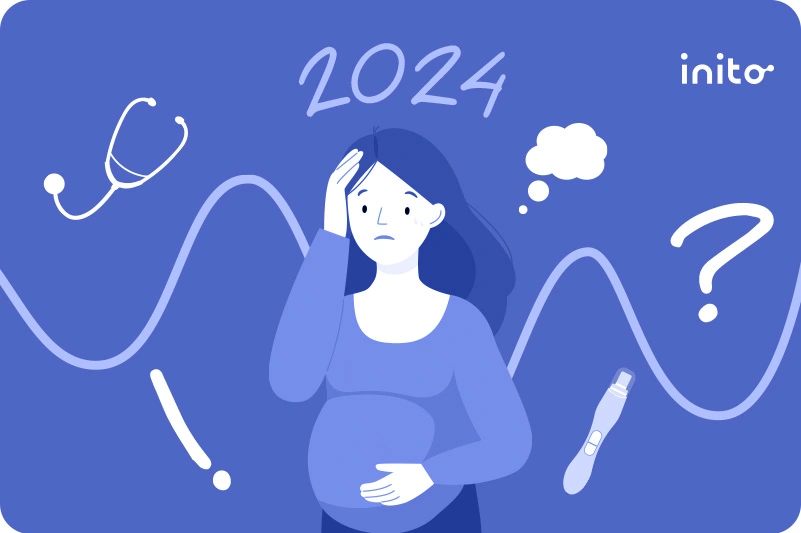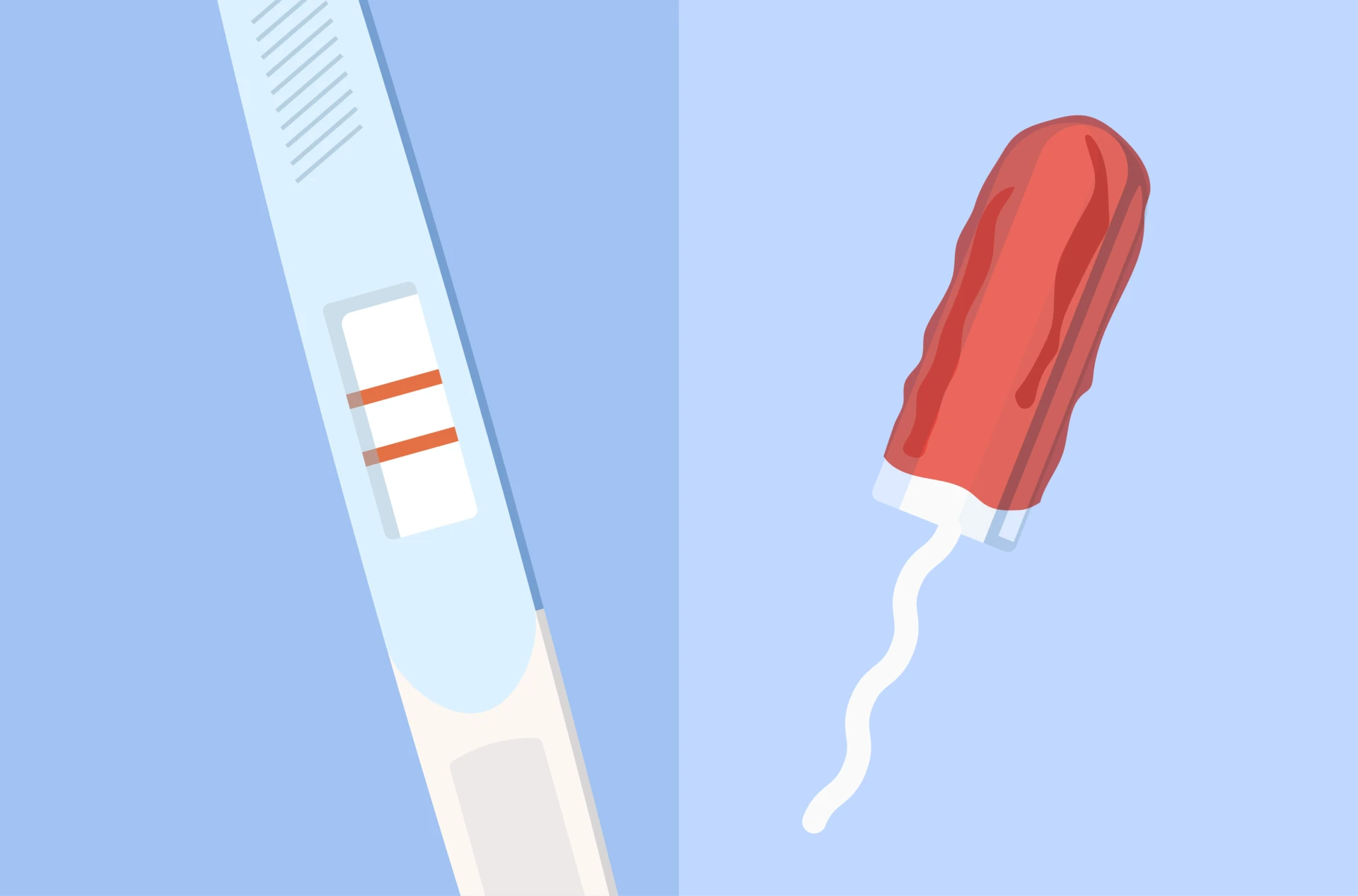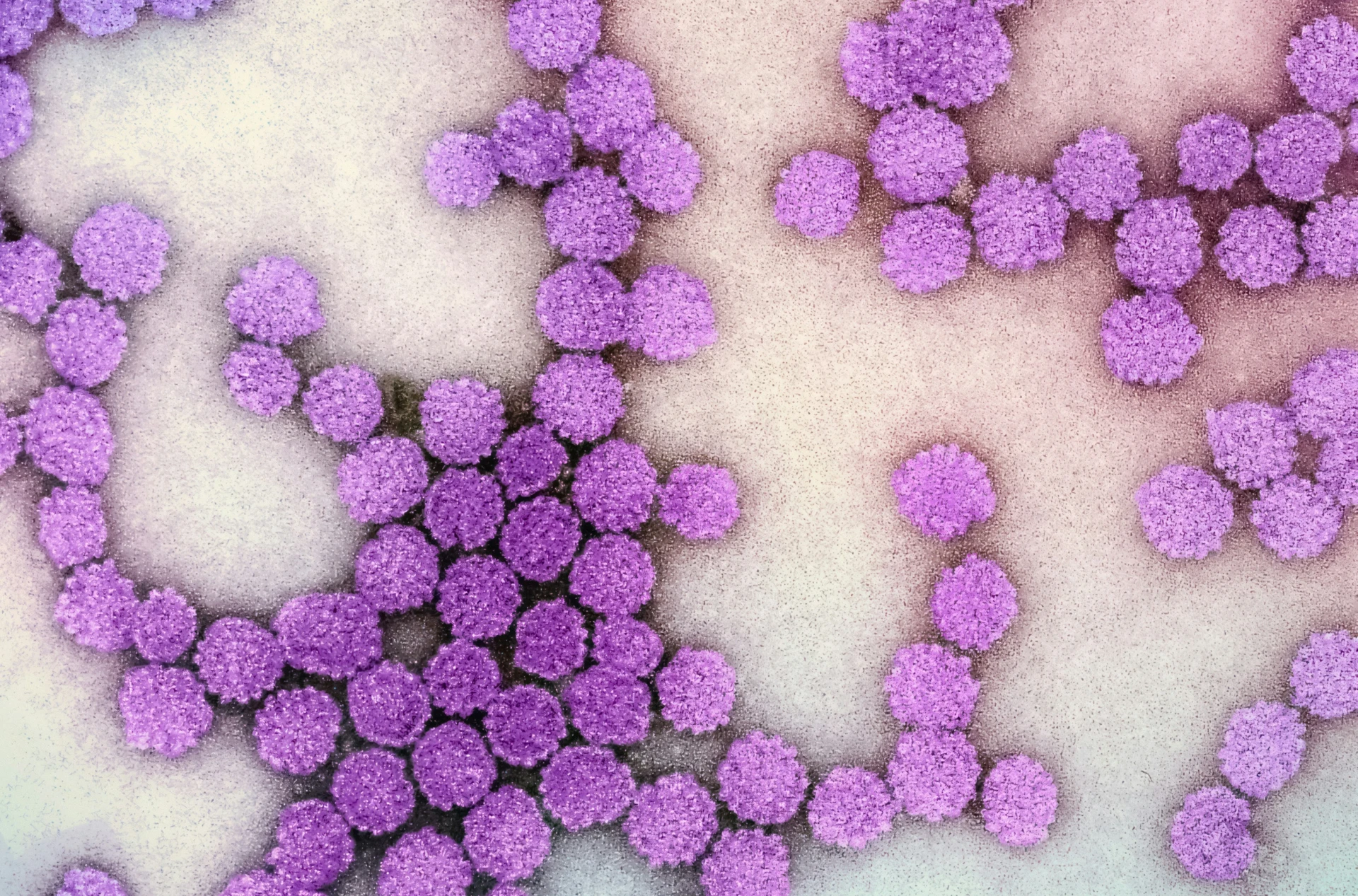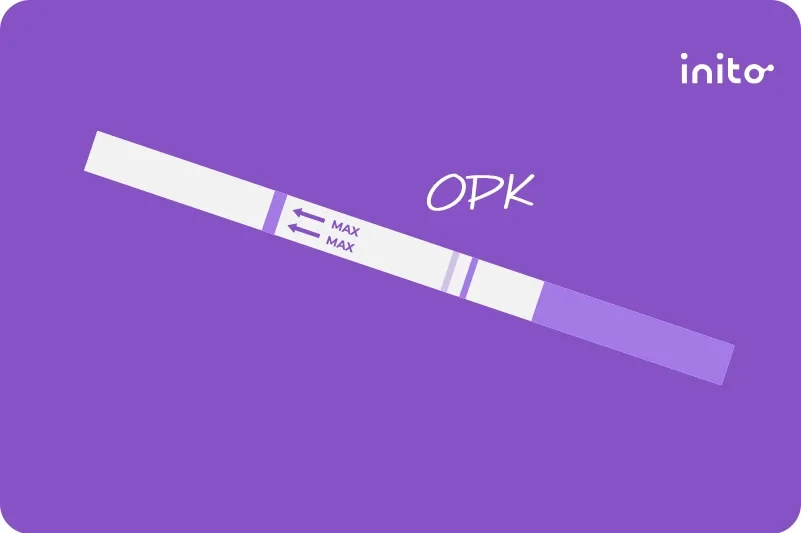Content table
It seems that there is more talk about pregnancy than ever. And that includes conversations about how some couples are finding it hard to get pregnant in 2025.
It’s amazing that more people are opening up and sharing their fertility stories (successes and struggles), as it helps couples not feel so alone.
But what does this mean in terms of pregnancy? Is it actually harder to get pregnant in 2025 than it’s been in the past? Or has social media made it seem that way?
According to the CDC, birth rates from 2020 to 2021 are down for women between the ages of 15 and 24, but they are actually up for women between the ages of 25-44.
What’s the main reason behind this? Lifestyle.
Research shows time and time again that lifestyle factors play a significant role in health, including fertility.
But, before we dive into lifestyle, let’s first chat through another struggle that may be making it hard to get pregnant: The difficult journey of the sperm meeting the egg.
There are a whole lot of things that have to align for this journey to end in pregnancy, so it’s worth spending some time understanding it.
Key Takeaways
- CDC data shows a decrease in birth rates from 2020 – 2021 for women between the ages of 15-24, but an increase for women 25-44.
- Fertility isn’t all about the female, but also the male, and needs good sperm and egg health to succeed.
- The day before ovulation is the best time to try and conceive.
- The implantation window after ovulation is something to pay attention to and try to avoid sex during.
- Living a healthy lifestyle plays a big role in conception. This includes diet, sleep, exercise, stress management, and more.
- Cutting out bad and toxic habits (both for women and men) is important for getting pregnant.
- Feeling supported by a community and your partner is crucial in reducing the feelings of isolation and frustration that often come with fertility struggles.
Male and Female Fertility

It’s no secret that sperm must fertilize an egg for pregnancy to occur. But what exactly do the sperm and egg need to go through in this process?
First, when a man ejaculates, over 300 million mature sperm are released. But then many immediately die due to the pH of the woman’s vagina.
Then, some sperm just get tired and give up, and the remaining make their way to the uterus, where the woman’s white blood cells attack! That’s because the woman’s body recognizes the sperm as a foreign substance and leaves only 1% to move on to the next phase, which is about 100,000 sperm.
Many of those sperm get lost and never make it any further. This leaves only about 200 sperm that actually find the egg.
And from there, the egg chooses which sperm it wants, and *voila* – pregnancy!
So, as you can see, fertility is not just related to a woman’s health but also the health of the male and his sperm.
Let’s get more specific and look at each piece of the fertilization puzzle that must align for pregnancy to occur.
Sperm health
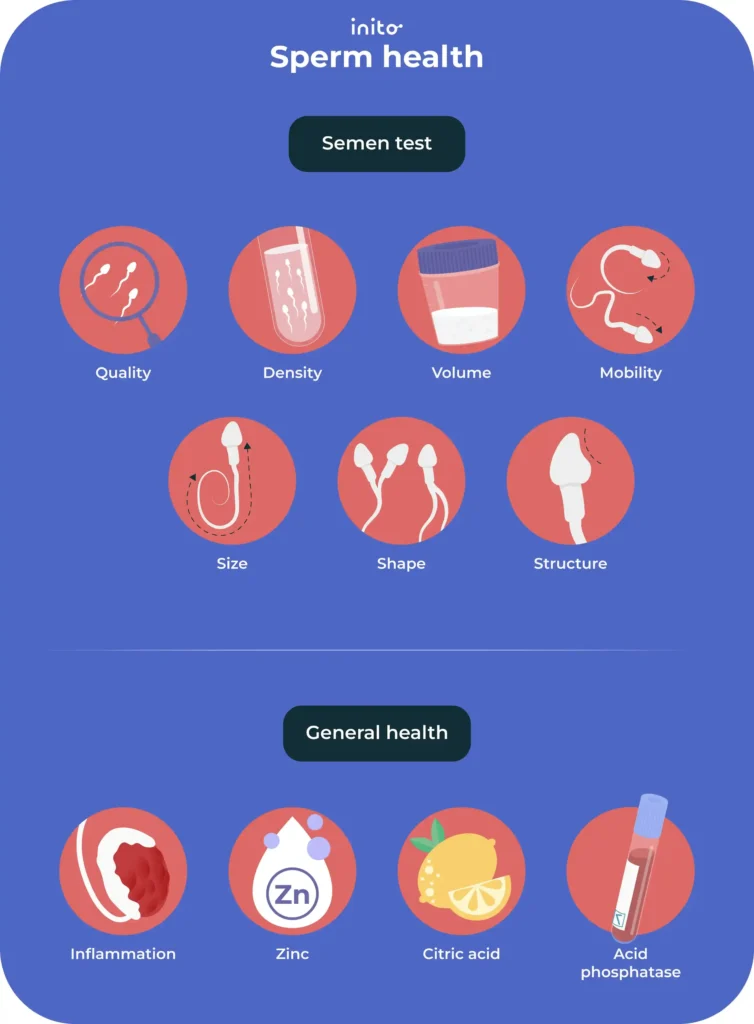
If getting pregnant is a struggle for you, first, let’s acknowledge how discouraging and frustrating that can be. It’s easy to lose hope, but let’s regain it.
It’s important for your partner to get his sperm tested to see if it’s his semen health that is keeping the pregnancy from happening.
A semen test checks:
- Quality
- Density
- Volume
- Mobility
- Size (tested in a sperm morphology test, which is separate from the standard semen test)
- Shape (tested in a sperm morphology test, which is separate from the standard semen test)
- Structure (tested in a sperm morphology test, which is separate from the standard semen test)
Doctors may also check other areas of your partner’s health that can affect sperm health including:
- Inflammation
- Zinc
- Citric acid
- Acid phosphatase
Cervical Mucus
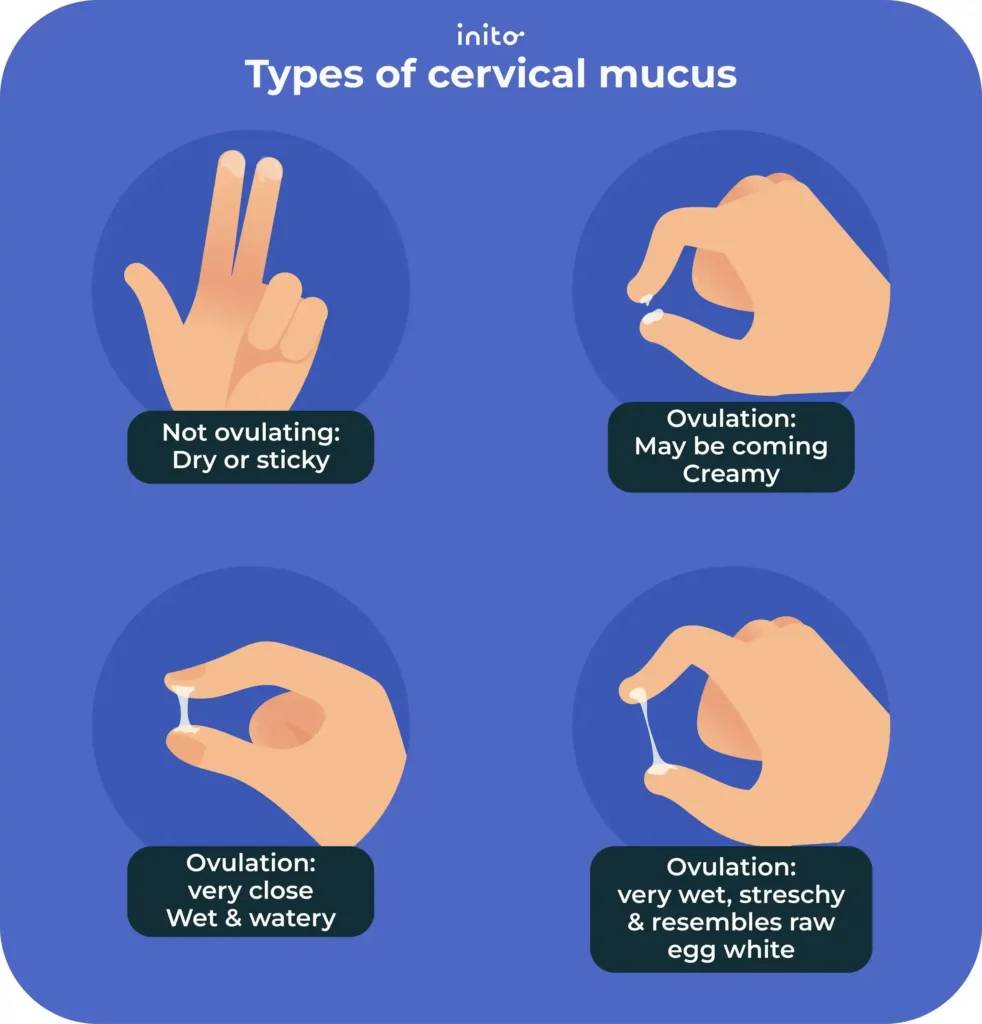
Another piece of the pregnancy puzzle is your cervical mucus, which, if we are being honest, can make things difficult for the little sperm trying to wiggle their way in.
The acidity of your vagina is one barrier that makes it hard for sperm to get in. Then, as we shared above, if the sperm make it past that point, your white blood cells could attack this foreign object, not realizing that it’s something you want in there.
This is just your cervical mucus creating a safe space for the sperm to thrive when it’s the right time.
When your body is ovulating and ready for the sperm to do its thing, your estrogen levels peak, which causes your cervical mucus to go from pasty/creamy to stretchy – think of the consistency of egg whites.
Why does this happen? So that it’s easier for the sperm to swim into the vagina and make its way to your egg to result in pregnancy.
Your cervical opening will also become high and soft to make things easier for the sperm, too.
If you find your cervical mucus is working against you instead of for you, then try having more unprotected sex outside of your fertile window. This allows your body to get to know the foreign sperm a bit better so that it quits blocking it when you really need it to get through (a.k.a. when you’re fertile).
Egg Release
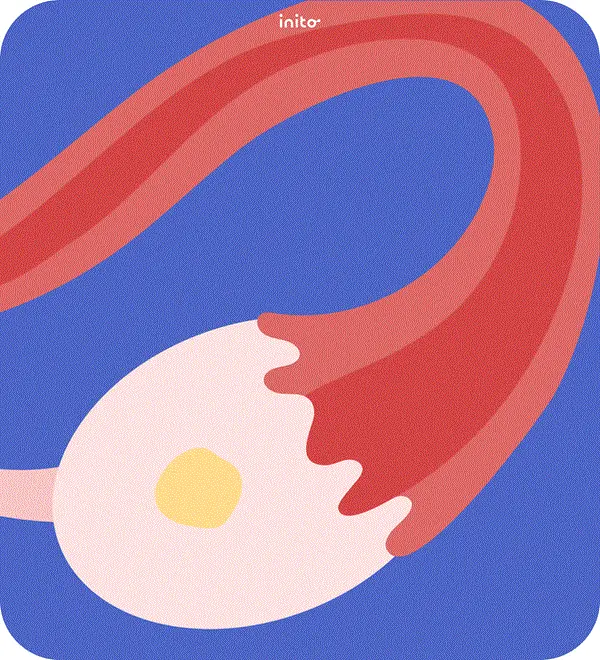
When the egg is released, it moves through the fallopian tube into the isthmus (thanks to the help of the tube’s cilia). Here it waits patiently for that one lucky sperm. It’s important for the egg to travel in the right direction, or else it will find itself in the wrong place at the wrong time.
There is no way to really know if the cilia are moving in the right direction. Still, you can tell whether you’ve ovulated by tracking your cycles with the help of the Inito Fertility Monitor.
If you don’t ovulate, that means anovulatory cycles are to blame, which is the #1 cause of infertility.
Sperm Meets the Egg
It is the same idea as when Harry met Sally but with a bit of a twist. The sperm and egg have a meeting time and place where the magic happens.
And pregnancy is a perfect example of how timing is everything.
The fertile window
You may be surprised to hear that sex before ovulation gives you a better chance of conception. That’s because sperm lives in your body for 4-5 days.
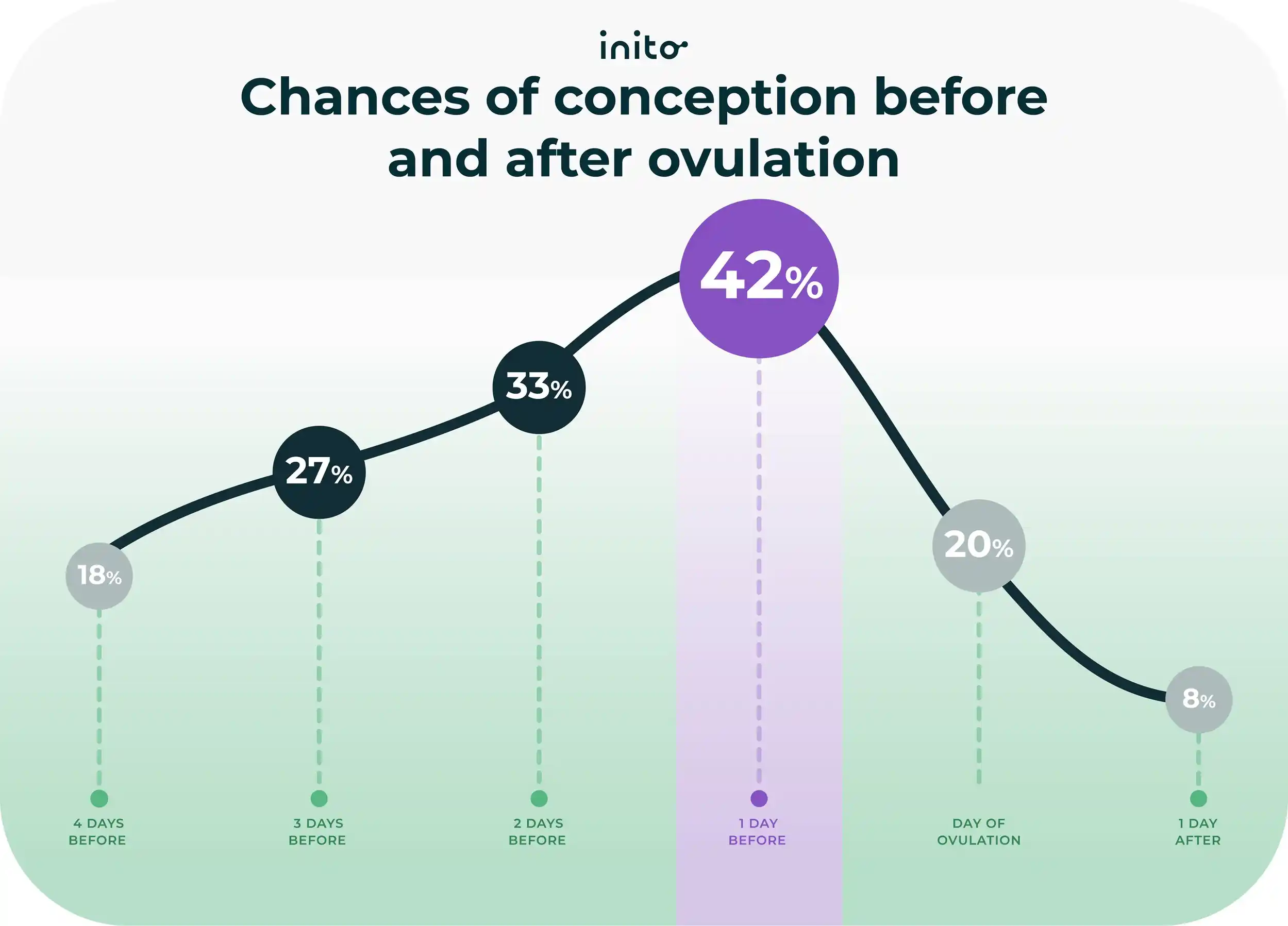
Here’s a look at the importance of timing and how it shifts your chances of conception:
- 4 days before ovulation: 18%
- 3 days before ovulation: 27%
- 2 days before ovulation: 33%
- 1 day before ovulation: 42%
- Day of ovulation: 20%
- 1 day after ovulation: 8%
So now that you’ve got the time right, let’s move on to the place.
The location
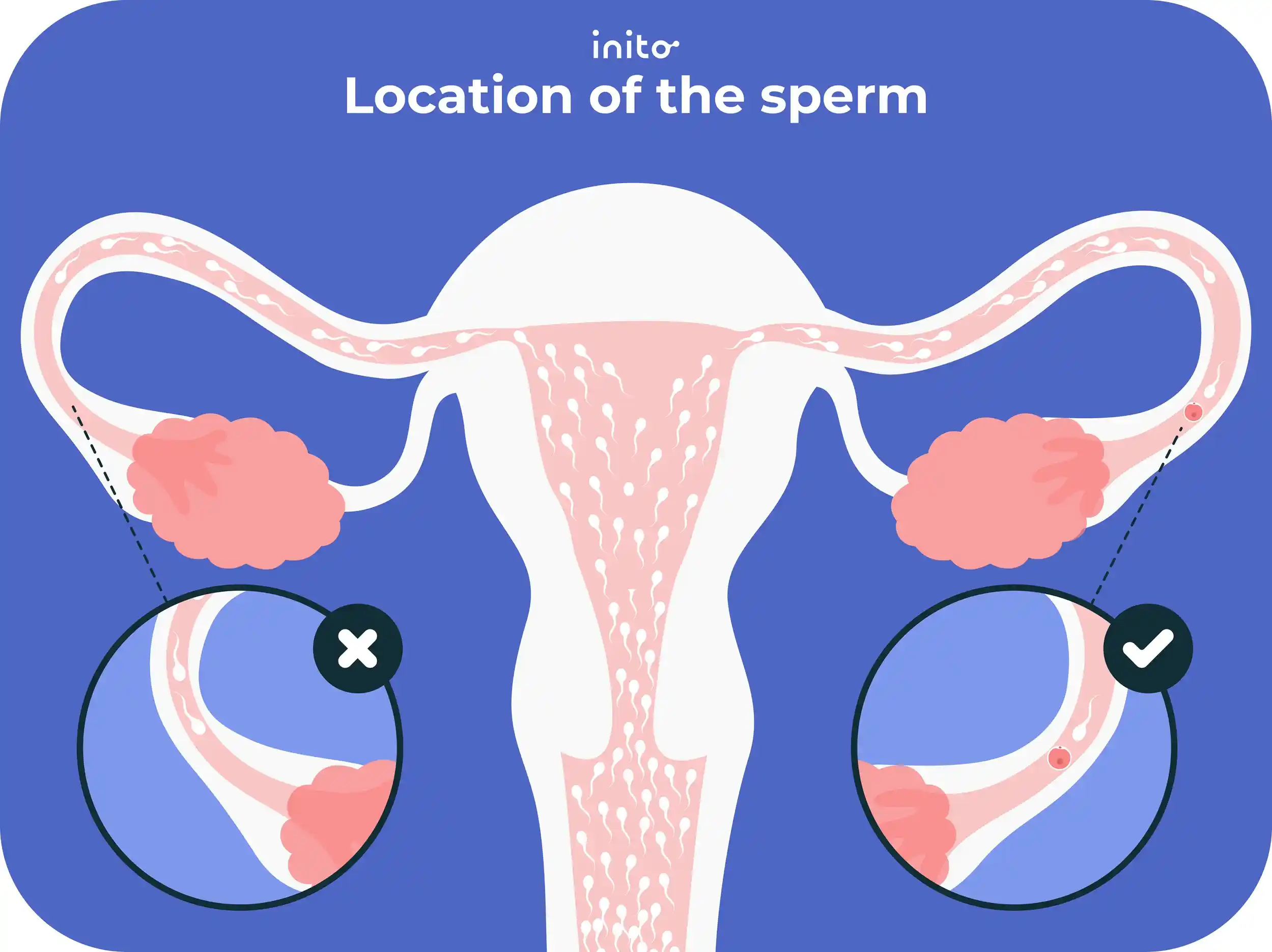
The sperm has to enter the same tube that the egg is in. Sadly, half of the sperm don’t reach the correct tube. Because there are fewer sperm, there is a lower chance that some sperm will find the egg.
And that’s why sperm health is so important!
But some of the little sperm do travel in the direction towards the egg only to meet at the isthmus part of the fallopian tube.
Here – at the junction of the isthmus and ampulla of the fallopian tube – is where the egg chooses her one lucky sperm, and fertilization takes place.
Implantation
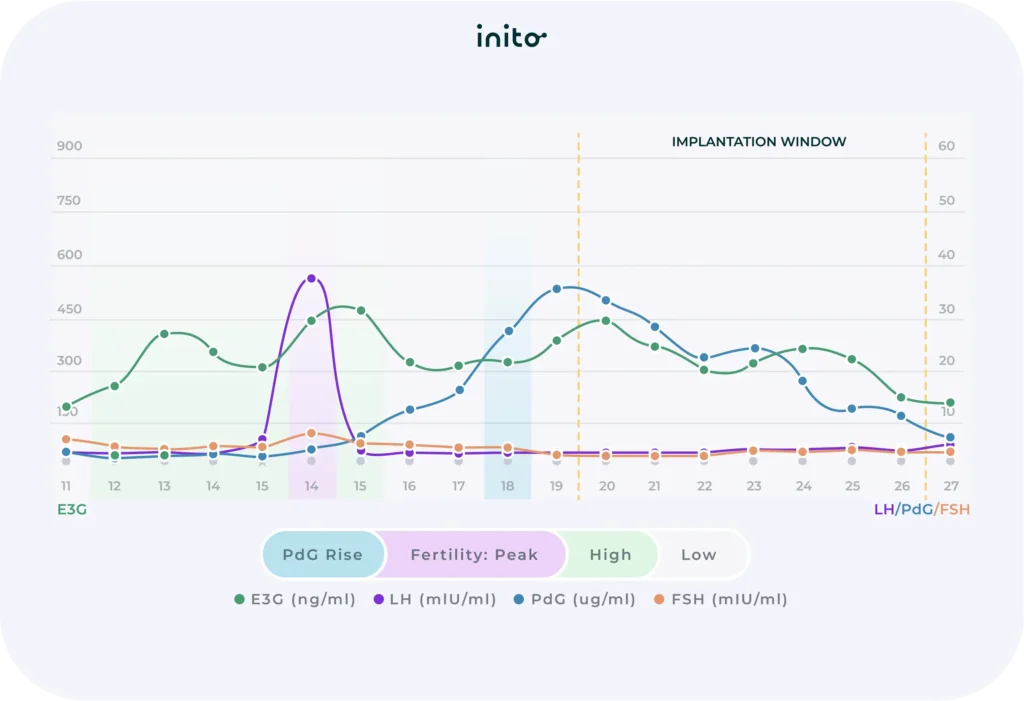
One of the key parts of implantation is the implantation window. This happens 6-12 days after ovulation (a.k.a. your luteal phase.)
Why is this stage so important?
Also crucial to this implantation stage is your uterine thickness. You want to aim for a thickness of about 8-10mm for successful implantation.
How does your uterine lining thicken? A rise in the level of estrogen results in the lining getting thicker, and a surge in progesterone helps your thickened uterine lining prepare for implantation.
This may be news to many, but you may find that skipping sex post-ovulation is actually good for pregnancy.
Another fun fact: ACOG states that pregnancy is only confirmed after implantation is complete. You may ovulate, but between one-third and half of all the fertilized eggs never implant, so pregnancy isn’t guaranteed to occur if you ovulate – it only will if you successfully implant.
Learn More: How to Make Implantation Successful: What You Need to Know
Egg Health
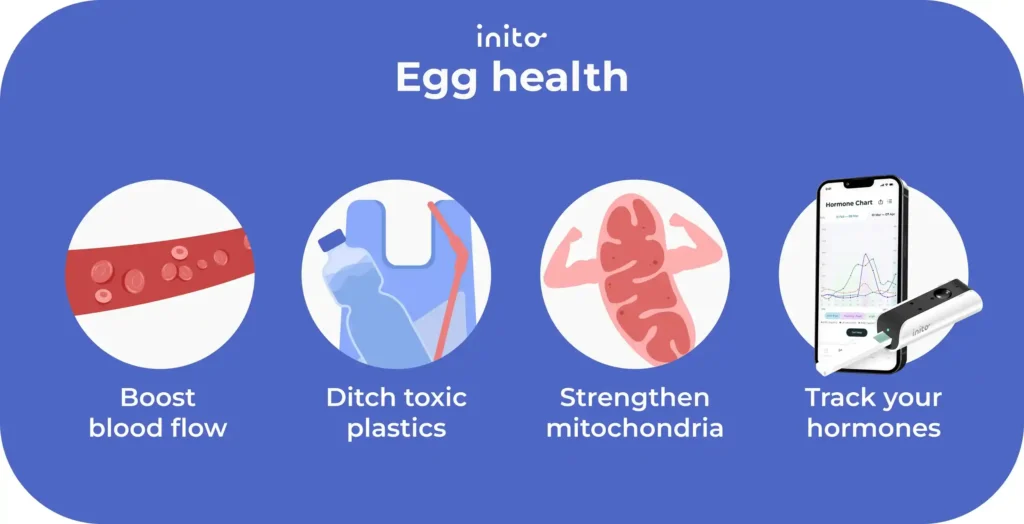
Just as important as all the above things is the health of your egg. The higher your egg health, the higher your chance of a successful pregnancy.
Studies show that chromosomal abnormalities cause at least 50% of miscarriages, so let’s take a look at what you can do to improve your egg quality and health.
1. Boost blood flow
It’s not news that blood flow and oxygenation in the body are essential, but did you know it could affect your egg health?
To improve your blood flow and oxygenation, do these things:
- Drink plenty of water (at least half your body weight in ounces per day)
- Exercise (yoga is great!)
- Massage therapy
2. Strengthen your mitochondria
You may remember this from your early science classes, but mitochondria are the powerhouse of your cells, meaning they take center stage in pregnancy.
To boost your mitochondrial health, you should:
- Eat foods rich in vitamins B2 and B3
- Get plenty of key minerals such as magnesium, iron, manganese, and CoQ10
- Get some natural sunlight daily (yes, even if it’s cloudy outside, it counts)
3. Ditch the toxic plastics
More and more research has been proving that items we use daily contain BPA and phthalates. These can cause your hormones to get off balance, and that’s not something you want when you’re trying to get pregnant.
Avoid using:
- Single-use plastic bottles
- Beauty items
- Cleaning supplies
4. Track your hormones

Working on balancing your hormones is key to fertility. And the best way to track your hormones regularly and keep them in check is by using the Inito Fertility Monitor.
This checks your estrogen, LH, PdG (urine metabolite of progesterone), and FSH all in one test strip. Inito helps you track your fertile window and confirm ovulation.
How to Make Pregnancy Easier?
As you can see, there are a lot of things that have to align perfectly for pregnancy to occur.
But there are some other things that are key to making a healthy pregnancy more likely.
So, if you feel like you’re fighting an uphill battle with fertility and have found that it’s hard to get pregnant in 2025, know that you’re not alone.
Here are a few things all couples struggling to conceive can do to get pregnant.
Get rid of bad habits

If you’ve got any vices that your doctor would be unhappy about, it’s time to kick them to the curb so that you can increase your chances of pregnancy.
This includes things such as:
- Smoking
- Drinking
- Drug use
- Excess caffeine
- Eating processed sugar
- Obesity
- Being underweight
- Excessive exercise
- Using toxic products
- Poor sleep
- Excess stress
- Poor diet & hydration
Add in good habits
Now, it’s no fun just to eliminate all your bad habits and have nothing fun to replace them with.
Here are some good habits you’ll want to adopt to increase your chances of a successful conception.
- Sleep at least 8 hours a night to keep your mental and physical health in good shape.
- Eat a healthy, balanced diet that includes healthy fats, proteins, vegetables, and fruits.
- Reduce stress as much as possible by meditating, doing breathwork, walking, and more.
- Track your hormones using the Inito Fertility Monitor.
- Exercise regularly but moderately to keep your weight in a healthy place. Avoid workouts that are excessively high intensity and aim more for low-intensity ones such as weight lifting, pilates, yoga, walking, and more.
Steps to Conceive in 2025
It takes two to tango when it comes to conception, so it’s important that you and your partner work together to increase the chances of pregnancy.
There are things that both males and females can do to optimize your chances of pregnancy, so we present to you – a fertility checklist.
Top 8 ways to optimize your chances for pregnancy
✓ Talk about your fertility goals together. This may include reaching out to professionals for help or may consist of conversations about how adoption may be a preferred route. Make sure you’re on the same page.
✓ Men: get your sperm health checked.
✓ Women: get your hormones checked.
✓ Consult a doctor Go for regular health checkups, discuss health issues (if any) with your doctor, and take the right steps to manage your fertility health.
✓ Build a support system. Infertility can be an incredibly isolating and difficult experience. To help you remember that you are not alone, it’s important to build a community of support. A great place to start is our Inito TTC community.
✓ Adopt a healthy lifestyle. Use the things we shared above as ways to increase your overall health and your chances of pregnancy.
✓ Track your hormones. Use the Inito Fertility Monitor to identify your fertile window and confirm ovulation.
✓ Keep your relationship strong. It’s hard to stay positive and optimistic with your partner (or anyone, for that matter) when you’re having fertility struggles. But this time is more important than ever to stay connected to your partner so that you can support each other.

FAQs
Great news, there are a lot of things you can do!
Here are a few starting suggestions for boosting your chances of pregnancy:
- Get on the same page with your partner and prioritize keeping your relationship strong
- Get your hormones checked and have your partner get their sperm health checked
- Adopt healthy lifestyle changes like eating more nutrient-dense foods and incorporating regular exercise into your week
- Track your hormone levels and find out if you’re regularly ovulating (Inito can help you with this)
- Build a support system to help raise you up on your journey (think: supportive communities, a therapist, a good friend, etc.)
There are a lot of factors that can make it challenging to get pregnant. On the female side, issues like anovulation, hormonal imbalances, menstrual irregularities, and egg health are common barriers. On the male side, sperm health plays a very important role. Outside of that, timing intercourse during your fertile window makes a big difference as well. If you’ve been struggling to conceive for 6 months (>35 years) to a year (<35 years), it’s a good idea to start a conversation with your doctor about next steps.
There are a lot of factors that can pose challenges with getting pregnant. Some of the major ones include age, poor egg health or sperm health, menstrual cycle irregularities, hormonal imbalances, and other underlying medical conditions.
The best time to get pregnant may vary for individuals based on factors like their career, finances, age, etc. But from a purely medical standpoint, a woman has a higher chance of getting pregnant and a lower risk for complications when her eggs are younger. This is because, as a woman ages, her ovarian reserve (the amount of healthy, chromosomally normal eggs she has left) diminishes.
Was this article helpful?
- Products – Data Briefs – Number 442 – August 2022
- What lifestyle and environmental factors may be involved with infertility in females and males? | NICHD
- Predictive value of endometrial thickness, pattern and sub-endometrial blood flows on the day of hCG by 2D doppler in in-vitro fertilization cycles: A prospective clinical study from a tertiary care unit – PMC
- Genetic Considerations in Recurrent Pregnancy Loss



